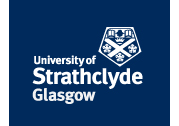Central
Population: 29,817,000. Biggest city: MOSCOW (8,637,000)
Journey time by train to second biggest city, Yaroslavl': 4 hours.
Urban population: 83%. Rural : 17%
Area: 483,000 square km (about the size of Germany), 62 persons / sq. km.
Climate zones: Ranging from steppes mixed with forest in the
south to mixed and coniferous forests in the north.
Socio-economic indicators (1999 Duma Vote). With Moscow as its chief city, the Central region ranks highest in the value of its GDP, more than double that of the average region, and it has a fifth of the total population of the Federation. It is also high in population gain through migration, including students, but there remains a high net population loss.
When account is taken of the population, GDP per capita in the Central region is virtually the national average. the life expectancy of residents is exactly the national average.
By Russian standards, employment condtions are relatively favourable, for workers are more likely to be paid their salaries in full and on time, and to feel secure about holding onto their jobs. Those considering their current household circumstances not bad and living conditions bearable are also slightly above the national average.
Administrative Divisions
| City of Moscow (Pop. 8, 637,000) | |
| Ryazan Oblast Population: 1,316,500 | |
| Moscow Oblast (Pop.6,573,200) | Capital: Ryazan (530,000) |
| Tula Oblast (Pop.1,800,100) | Ivanovo Oblast (Pop. 1,255,500) |
| Capital: Tula (584,000) | Capital: Ivanovo (476,000) |
| Tver Oblast (Pop. 1,642,600) | Smolensk Oblast (Pop. 1,166,200) |
| Capital: Tver (458,000) | Capital: Smolensk (353,000) |
| Vladimir Oblast (Pop. 1,636,900) | Kaluga Oblast (Pop. 1,095,900) |
| Capital: Vladimir (356,000) | Capital: Kaluga (362,000) |
| Bryansk Oblast (Population: 1,473,000) | Oryol Oblast (Pop. 910,300) |
| Capital: Bryansk (482,000) | Capital: Oryol (346,000) |
| Yaroslavl Oblast(Pop. 1, 443,000) | Kostroma Oblast (Pop. 800,700) |
| Capital: Yaroslavl (631,000) | Capital: Kostroma (304,000) |


